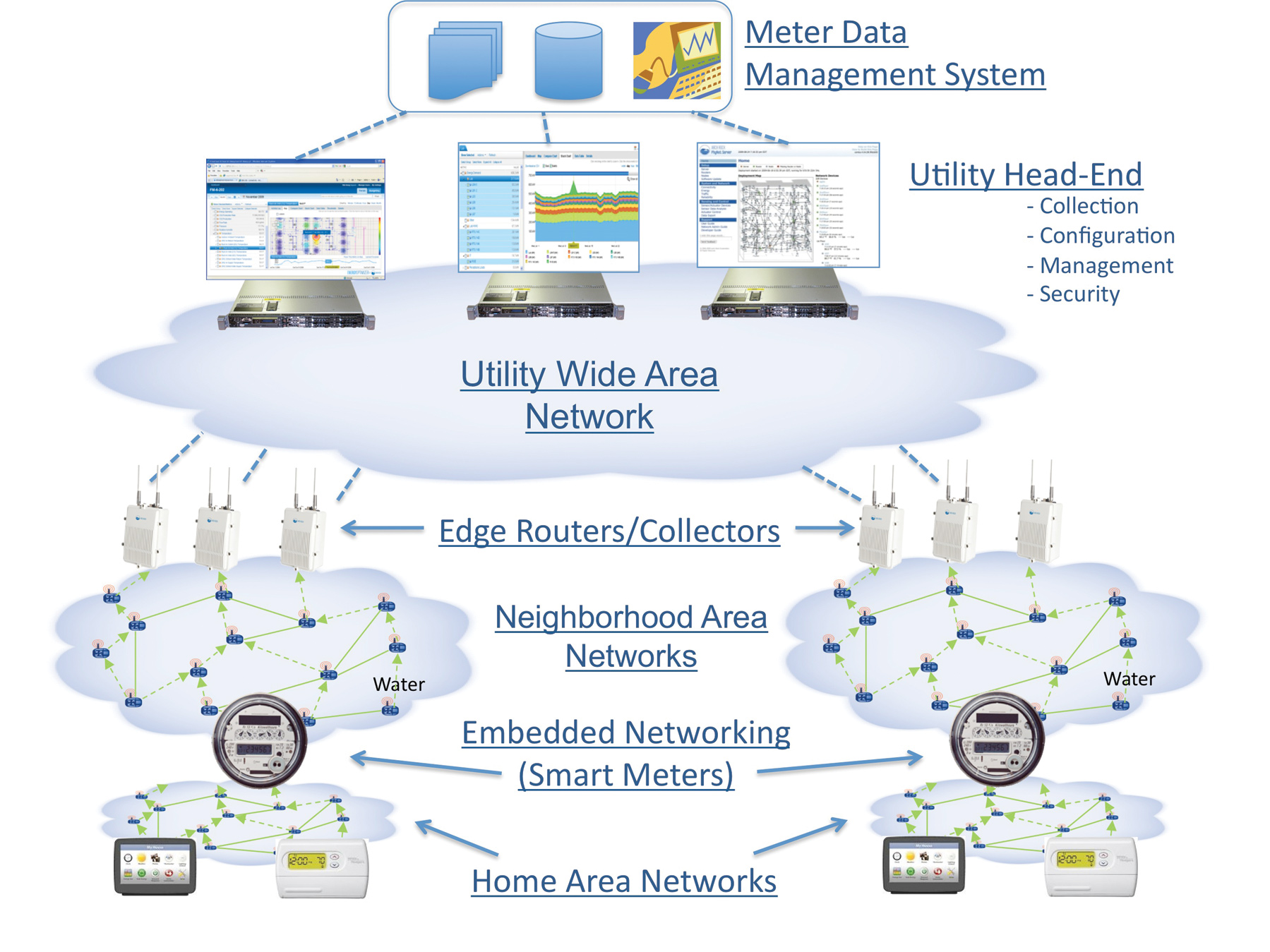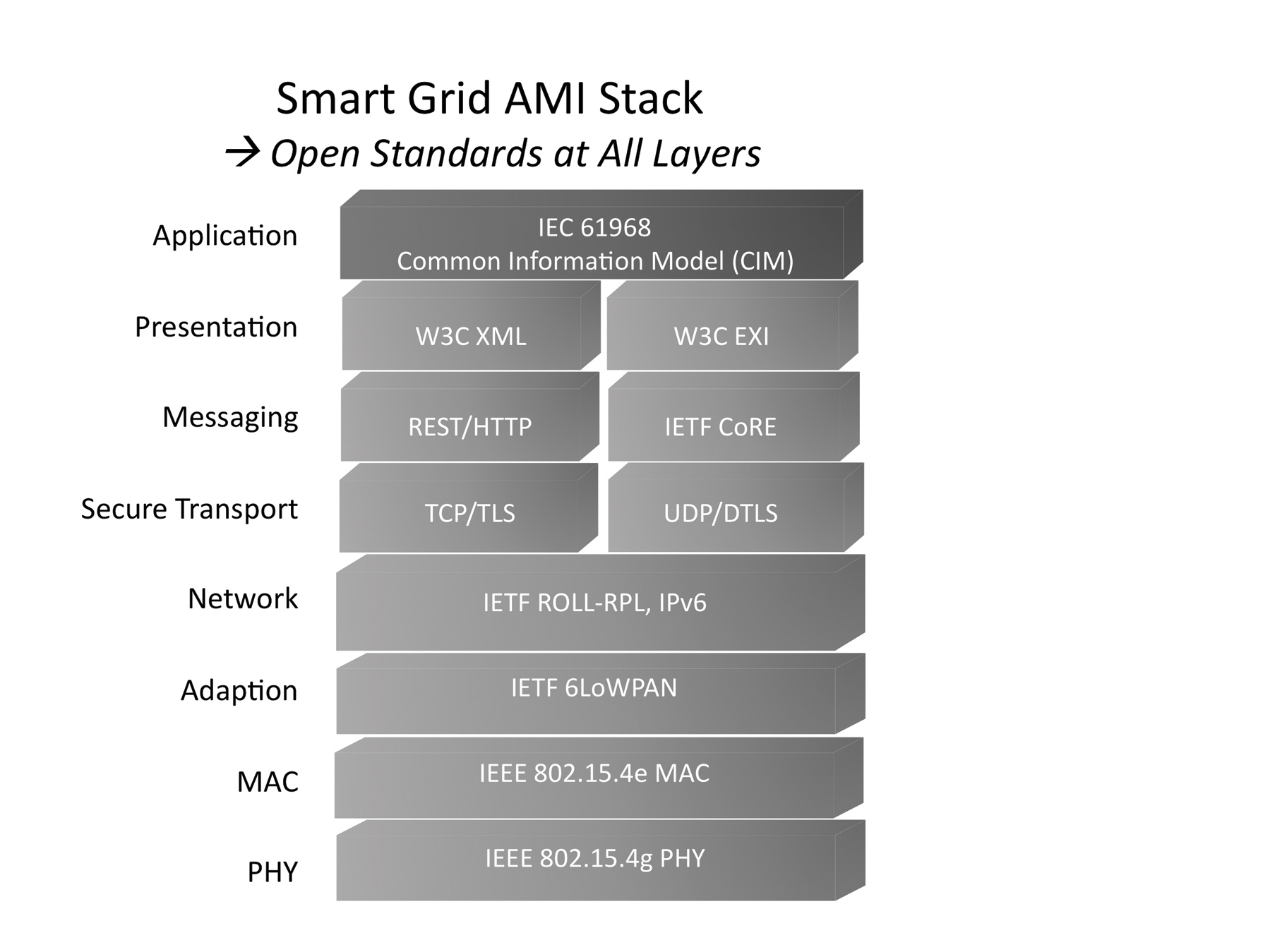The AMI industry faces challenges today that were not anticipated even a year ago, when the industry was abuzz with news of smart meter rollouts and talk of pending IPOs. Now Congress has shelved the national energy bill, deeming it too difficult to pass in a mid-term election year, and California's groundbreaking energy legislation (AB 32) is threatened with suspension by a ballot measure, pushing the regulatory impetus for energy efficiency even farther into the future. Calls for balancing the federal budget are dimming the prospects of a renewal beyond next year of the Recovery Act funding for smart grid investments. A wary and skeptical public is scrutinizing the smart meters themselves. And public utility commissions are putting the brakes on the utilities' plans to roll out smart meters that may become obsolete in less than five years due to a lack of standards1 or transferring the cost of upgrading those early meters to the ratepayers.

Roland Acra, CEO
Arch Rock Corporation

Malay Thaker
Vice President of Marketing
Arch Rock Corporation
While the first of these problems are political – and beyond the control of the AMI industry – the last two may in fact be helped by standardization. This article surveys the efforts under way to converge on standards for the AMI industry that will mitigate obsolescence (and may thus help ease the public’s fears of smart meters) and examines the key standards themselves.
The AMI landscape is currently dominated by a few pioneering and innovative vendors who have literally created the industry from scratch. As is common in these situations, each player has created solutions based on its particular strengths. But, because these solutions are not interoperable, a utility is forced to select a single vendor for all components of the AMI system, rendering the utility susceptible to the risks of vendor consolidation that must occur in any new market. This proprietary environment, while it initially spurred the nascent industry’s growth by helping to raise awareness of the benefits of AMI, is now acting as a limiting factor on the rapid expansion of AMI networks.
Add to this the longevity of metering equipment (15-20 years), the comparatively short lifespan of networking technology (five years), and the even shorter lifespan of software (18 months), and it is clear that standards are the only way to achieve an operational model wherein each AMI component can evolve independently without compromising the whole architecture. All players recognize the need for standards, including the government, which has issued a clear call for smart grid standards and is taking a proactive role in coordinating their development.
Before examining the forthcoming AMI standards, it is worth taking note of a comparable standardization effort that has succeeded well beyond the expectations of anyone involved in the industry at the outset – the global Internet. The scale of an AMI network is in fact very nearly the same as the Internet and those wired and wireless broadband networks deployed worldwide over the past 15 years. The Internet consists of hundreds of millions of consumer devices (PCs, laptops, mobile phones, game consoles, etc.), all interacting with Internet-based servers by communicating over a network of diverse physical networks all “speaking” the IP protocol. Furthermore, as a public network, the Internet constantly faces the dual challenges of securing the network infrastructure and protecting the end devices from attack – and meets these challenges successfully.
Like the Internet, an AMI network consists of millions of devices – in this case, smart meters in a utility company’s service territory. Millions more devices may join the AMI network in the future: Home Area Network (HAN) devices such as Programmable Communicating Thermostats (PCTs) and other load-control devices, dedicated energy management displays, Plug-in Electric Vehicles (PEVs), and distributed power-generation devices (e.g., inverters for solar arrays on home and business rooftops).
Organizations and Their Roles
in AMI Standardization
- NIST, the National Institute of Standards and Technology (part of the Department of Commerce), is coordinating the standardization efforts for the entire smart grid, with contributions from other organizations in their respective areas of expertise and focus.
- IEEE, the Institute of Electrical and Electronics Engineers, is working to standardize the MAC and physical layers of wireless AMI networks.
- IETF, the Internet Engineering Task Force, is working to define the IP routing and adaptation layer protocols to enable efficient IP implementation over emerging link technologies from IEEE that are relevant to AMI networks.
- W3C, the World Wide Web Consortium, is working to standardize the message formats for efficient data delivery over AMI networks.
- IEC, the International Electrotechnical Commission, is defining the common information models for AMI and the smart grid.
- UCAIug, the Utility Communications Architecture International Users Group, has, through its OpenHAN working group, led the efforts to define the requirements for devices communicating over the HAN.
- The ZigBee Alliance is an industry organization that has led the effort to define the Smart Energy Profile, a common information model for in-home control and display devices.

Figure 1: AMI System Overview Chain
In addition to AMI and HAN devices, smart grid networks also include generation, transmission and distribution automation networks with hundreds of thousands of controllers and sensors. The challenge the smart grid industry faces today, then, is not that we don’t know how to solve the problems of a huge internetwork similar to the Internet, but that we need to solve the problem RAPIDLY, so as not to lose industry momentum and public confidence.
With this in mind, it becomes clear why many of the standards being pursued for the AMI are in fact the same IP standards that power the Internet; and the public forums and organizations where they are being debated and finalized have familiar names: IETF, IEEE, and W3C. Other organizations leading AMI standardization are less familiar in the Internet arena but no strangers to the utility industry: IEC and UCAIug. Coordinating all of these groups’ efforts is the NIST’s Smart Grid Interoperability Panel (SGIP), using a process known as the Priority Action Plans (PAPs) for addressing critical gaps in smart grid standards, of which AMI is one. (Network communications and cyber security are others.)
Figure 1 illustrates the components of an AMI system. HANs (Home Area Networks), typically considered Customer Premise Equipment (CPE) and not included in the AMI, are shown here for completeness. Collection networks for meter data, referred to in Figure 1 as Neighborhood Area Networks (NANs), may be any one of wireless, cellular, power-line, etc. The utility Wide Area Networks (WANs) may similarly be private or public Wi-Fi, T1, WiMAX, fiber or cellular networks. NIST has strongly encouraged the industry to converge on IP standards over any of the link types above for this and other internetworking components of AMI and the smart grid.
Gaps in the IP standards are being addressed by IETF working groups. The IEEE 802.15.4 committee is addressing the gaps for cost-effective, unlicensed spectrumbased wireless mesh NANs at the physical and MAC (Media Access Control) layers. W3C committees are addressing end-to-end messaging and formats. The IEC has created the common information models for AMI.
Figure 2 illustrates the protocol layering of the AMI communications stack for wireless mesh networks. Wireless mesh networking is well matched to the AMI collection networks in North America, with its lower density of homes compared to some parts of Europe and Asia (where power-line communication, or PLC, may be quite cost-effective), and its wider geographical spreads within cities, towns and neighborhoods. Another distinct advantage to wireless is the coverage it provides for non-electric meters such as gas and water.
In these cases, long-life batteries can power the meter communications, and the meters may be considered “constrained devices” (low-power consuming). Even in electric meters, stored-energy-operated (e.g., using super-capacitors) wireless communication has the benefit of providing meter connectivity during power outages, when that connectivity – and the resulting remote visibility – is at a premium.

Figure 2: AMI Protocol Stack
Let us examine each of the standards in some detail…
At the highest layer of the AMI, Meter Data Management Systems (MDMSs) need to have a common understanding of the capabilities of a variety of meters from a number of different vendors. The Common Information Model (CIM) standardized by IEC addresses this requirement via the standards suite 61968. This set of standards encompasses many aspects of utility operations, from customer support to network planning, operations and maintenance, to records and asset management. In particular, IEC 61968-9 governs the meter reading and control functions, including data collection, service connect/disconnect, service outage detect/confirm, and reset.
The meter-based layout of data is standardized by ANSI and called C12.19. Application-layer protocols for transporting the meter data have ranged from entirely proprietary representation and transport of meter data, to proprietary transport of C12.19 data, to use of another ANSI standard called C12.22. However, the more modern and future-proof implementation of the above applications relies on webcentric paradigms (HTTP and XML) while making those especially efficient over the new resource-constrained but cost-effective collection networks for AMI.
The format of the data exchanged between the meter and the MDMS is XML, which is a W3C standard. However, in constrained devices and networks, the sheer volume of XML data needs to be pared down significantly. The W3C and IETF are defining a pair of standards to address this need. EXI (Efficient XML Interchange) is a W3C draft that implements a compact and efficient representation of XML that the meter can use to encode meter data tables and that the head-end can then “uncompress” back into XML, which the MDMS can use to decode them. The IETF’s CoRE (Constrained RESTful Environments) working group has a draft for a messaging protocol (Constrained Application Protocol, or CoAP) over constrained networks that is similar to HTTP “GET” and “POST” messages, but much more compact and efficient.
At the transport layer, TCP (Transmission Control Protocol) and UDP (User Datagram Protocol), along with their secure counterparts TLS (Transport Layer Security) and DTLS (Datagram Transport Layer Security), will carry the end-toend data (from meter to head-end) over a variety of physical networks (NAN, WAN) using IP routing.
At the routing layer, the IETF RoLL (Routing over Low-power and “Lossy” Networks) Working Group defines a new IP routing protocol called RPL (Routing Protocol for Low-power and Lossy Networks) between embedded devices with limited bandwidth, power, memory and processing resources. These devices can be interconnected through a variety of links, such as IEEE 802.15.4, Bluetooth, low-power WiFi, wired or other power-line communication links. Some of RPL’s vital features for AMI include multi-hop mesh routing, robust operation in the presence of packet loss, and efficient implementations in constrained network nodes with limited power.
The IETF working group 6LoWPAN (IPv6 over Low-power Wireless Personal Area Networks) has already defined the adaptation layer for IPv6 over IEEE 802.15.4 networks. The benefits of IPv6 for the AMI include a large IP address space to accommodate virtually unlimited growth of meters and other end-devices, and “plug and play” capabilities of IPv6 such as stateless auto-configuration of devices.
At the MAC layer for low-power wireless networks, the proposed IEEE 802.15.4e standard enhances the 802.15.4 MAC with MAC-layer security, industrial-grade robustness including frequency diversity via hopping, and low-energy operation.
Definition of new physical layers by the Smart Utility Networks Task Group – IEEE 802.15.4g – is providing global standards on radio communications and enhanced minimal throughput including in the sub-GHz license-free frequency bands. This opens the door to standards-based semiconductor offerings from the leading radio transceiver vendors, with expected volume-based cost improvements, in contrast to the very sub-optimal current situation in which each AMI vendor offers its own in-house, proprietary and (to the utility) cost-inefficient radio implementation.
The smart grid will doubtless increase the power grid’s efficiency and bring unprecedented opportunities for energy savings, but it will also create a number of operational challenges. Security is at the top of that list. Some even claim that the use of TCP/IP may itself represent a security issue. But the adoption of the TCP/IP architecture and associated standards by the smart grid industry does NOT mean that a utility’s private resources will be exposed to all Internet users. Even today, the Internet is a collection of public and private networking infrastructures running IP everywhere, with each organization free to decide how to set its level of security by publicly exposing all, some or none of its networked resources.
Furthermore, the Internet represents the largest possible community effort and knowledge database for monitoring, analyzing and fixing flaws and threats – something no closed and proprietary system could ever hope to achieve. The old paradigm of “security by obscurity,” referring to the false premise that proprietary networks are somehow more secure, has long been rejected by the security community. The belief is that the open protocols and paradigms are by far the most secure ones, given their maturity and the thorough understanding of their vulnerabilities and threat models, for which remedies have been found and incorporated.
Years of experience in the Internet community have led to the development of effective IP security standards, security products and solutions (e.g., firewall, intrusion prevention, encryption), best practices and policies (access control, traffic filtering, security zones, virtual private networks) and their adoption by all organizations connecting to the Internet. These clearly apply to the smart grid infrastructure. Open standards and protocols have driven cooperation on security, enabling global teams to identify, inform and fix security issues. Organizations such as the Computer Emergency Response Team (CERT), the CERT Coordination Center, and the Computer Security Incident Response Team (CSIRT) are collaborating with vendors. Utilities deploying smart grid infrastructures can leverage and benefit from this collaboration.
Generally speaking, the Internet protocols may in fact represent our best opportunity to rapidly converge on a set of standards for the networking aspects of the smart grid. At a time when the industry faces many challenges, this is a very timely and welcome opportunity to reassure the public and regulators that development of the smart grid will not be slowed by the lack of standards – or the early obsolescence that would be its logical consequence.
About the Authors
Roland Acra joined Arch Rock as president and CEO in December 2005. Prior to Arch Rock, he was President and CEO at Procket Networks, a high-end core Internet router manufacturer, which he successfully led to an acquisition by Cisco Systems in 2004. Before that, Acra held several senior management positions at Cisco Systems from 1991 to 2003, including senior vice president and chief technology officer, group vice president and general manager of the Public Carrier IP Group, general manager of the Remote Access Business Unit and technical director of Cisco in EMEA. Acra holds Diplome d’Ingenieur degrees from Ecole Polytechnique and Ecole Nationale Superieure des Telecommunications (Paris, France).
Malay Thaker joined Arch Rock in September 2006 and is vice president of marketing, customer solutions and product management. Prior to Arch Rock, Thaker held a similar position with GoBackTV, Inc., a company specializing in the delivery of digital video over IP networks, and Packet Design LLC, where he served in marketing and general management. Earlier he held general management, sales and engineering positions at Com21, Stratacom and GraphOn. Thaker holds a Bachelor of Science degree in physics from UCLA.
1 Maryland Public Services Commission; Case No. 9208; Order No. 38410







